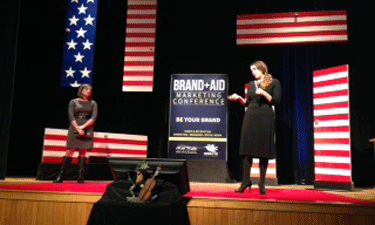 Park and recreation agencies face a fierce field of competition. From private sports leagues and high-end gyms to for-profit adventure parks and more, parks and recreation need to find creative ways to promote their unique value proposition. A major hurdle for many agencies, though, is their marketing resources.
Park and recreation agencies face a fierce field of competition. From private sports leagues and high-end gyms to for-profit adventure parks and more, parks and recreation need to find creative ways to promote their unique value proposition. A major hurdle for many agencies, though, is their marketing resources.
Unlike health club franchises or for-profit organizations, park and recreation agencies often don’t have dedicated marketing funds or staff. Through a few informal surveys and conversations, we have found that many park and recreation professionals in charge of their agency’s marketing efforts have no formal marketing background and are often thrown into the position. While this can be a challenge, it doesn’t mean that agencies can’t learn marketing techniques to keep them in competition with for-profit organizations.
A great way of keeping up with the competition is through professional development and training. Grand Prairie Parks, Arts and Recreation and Arlington Parks and Recreation Department in Texas saw this need and created the Brand+Aid Conference — a marketing and social media training program geared specifically toward park and recreation professionals. NRPA’s marketing and communications team was invited to speak at the January 2015 Brand+Aid conference in Arlington, Texas, so Lauren Hoffmann, NRPA’s director of marketing and communications, and I headed south to talk about one vital marketing concept — destodgifying.
Parks and recreation is fun and exciting, so the marketing of parks and recreation should be, too. Simply stated, “destodgifying” means to take boring marketing pieces and make them exciting and interesting using simple techniques. At Brand+Aid, our team discussed ways to destodigify using four tools — voice, humor, dynamic print and real people. While we can’t fit an hour-long lecture into a magazine article, we do have a few tips to help boost your own marketing:
Voice. Knowing your agency’s voice helps create a consistent brand. A fun way to determine your voice is to think of a celebrity that would make a good spokesperson for you and then list that person’s characteristics. You may need to add additional characteristics or take some away. Once you’ve determined your modified celebrity voice, work to make your social media posts, blogs and any written content sound like that person.
Humor. You don’t have to be funny all the time, but incorporating humor into your marketing pieces can make you seem more approachable and relatable. Social media is a great place to incorporate humorous content since people already expect to see it there. Don’t think you’re very funny? Find someone in your office who is and talk to them for inspiration.
Dynamic Print. Program guides contain a lot of text and information, but you can catch the public’s eye through captivating visuals. Don’t have a stock photography budget? Good! Run a photo contest to get real pictures of people in your community that you can use to make your program guide more visually appealing while engaging your park and facility users.
Real People. Using pictures and stories of real people in your marketing pieces makes them more relatable to your audience. How do you get them? Just ask! People are often willing to share a story or testimonial that you can use to help promote your programs. If you need a little boost, though, try incentivizing testimonials through a contest or drawing.
NRPA’s marketing and communications team regularly shares marketing tips through the Open Space blog. You can also learn more about marketing and communications for parks and recreation at NRPA’s Annual Conference.
Roxanne Sutton is NRPA’s Senior Marketing and Communications Specialist.

